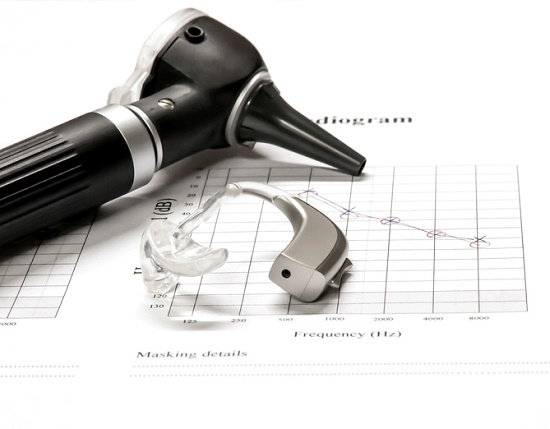
Are you thinking of investing in hearing aids?
If so, it can feel overwhelming at first. There are several options out there, and the obscure terminology doesn’t help.
That’s why we’re going to explain the most common and significant terms, so when you work with your hearing professional you’ll be well prepared to pick out the best hearing aid for you.
Hearing loss and testing
High-frequency hearing loss – this is the most commonly encountered kind of hearing loss. Individuals with high-frequency hearing loss have the most difficulties hearing higher frequency sounds, like the sounds of speech.
Sensorineural hearing loss – this type of hearing loss occurs when there is damage to the nerve cells of the inner ear. This is the most common type of permanent hearing loss triggered by exposure to loud noise, aging, genetics, or other medical ailments.
Bilateral hearing loss – hearing loss in both ears, which could be symmetrical (the same level of loss in both ears) or asymmetrical (varied degrees of loss in each ear). Bilateral hearing loss is usually best treated with two hearing aids.
Audiogram – the diagram that provides a visual representation of your hearing testing results. The vertical axis measures decibels (volume) and the horizontal axis measures frequencies (pitch). The hearing consultant registers the lowest decibel level you are able to hear at each frequency. If you need higher volumes to hear higher frequencies, your audiogram will show a sequence of high-frequency hearing loss.
Decibel (dB) – the unit utilized to measure sound level or strength. Typical conversation registers at around 60 decibels, and extended exposure to any sound over 80 decibels could result in permanent hearing loss. Seeing as the scale is logarithmic, an increase of 6-10 decibels doubles the volume of the sound.
Frequency – represents pitch as measured in hertz. Picture moving up the keys on a piano, from left to right (low-frequency/pitch to high-frequency/pitch).
Threshold of hearing – The lowest decibel level that can be detected at each frequency.
Degree of hearing loss – Hearing loss is generally characterized as mild (26-40 dB loss), moderate (41-55), severe (71-90), or profound (91+).
Tinnitus – a persistent ringing or buzzing in the ears when no external sound is present. Usually an indication of hearing injury or loss.
Hearing aid styles
Digital hearing aid – hearing aids that include a digital microchip, utilized to custom-program the hearing aids to match each individual’s distinctive hearing loss.
Hearing aid style – the type of hearing aid specified by its size and location relative to the ear. Main styles include behind-the-ear, in-the-ear, and in-the-canal.
Behind the ear (BTE) hearing aids – the majority of hearing aid components are enclosed inside of a case that fits behind the ear, connected to an earmold by a clear plastic tube. Mini-BTE hearing aids are also available.
In the ear (ITE) hearing aids – the hearing aid components are enclosed within a case that fits in the external part of the ear.
In the canal (ITC) hearing aids – the hearing aid components are enclosed in a case that fits within the ear canal. Completely-in-the-canal (CIC) hearing aids are also available that are nearly invisible when worn.
Hearing aid parts
Earmold – a piece of plastic, acrylic, or other soft material that is shaped to the contours of the individual’s ears, used for the fitting of hearing aids.
Microphone – the hearing aid part that picks up sound in the environment and converts the sound waves into an electrical signal.
Digital signal processor – a specialized microprocessor inside of a hearing aid that can manipulate and enhance sound.
Amplifier – the part of the hearing aid that increases the volume of sound.
Speaker – the hearing aid part that supplies the magnified sound to the ear.
Wireless antenna – available in select hearing aids, allowing for wireless connectivity to compatible gadgets such as smartphones and music players.
Hearing aid advanced features
Variable programming – hearing aid programming that permits the individual to adjust sound settings depending on the environment (e.g. at home versus in a congested restaurant).
Directional microphones – microphones that can focus on sound coming from a specified location while minimizing background noise.
Telecoils – a coil placed within the hearing aid that allows it to hook up to wireless signals emanating from telephones, assistive listening devices, and hearing loops installed in public venues.
Noise reduction – functionality that helps the hearing aid to differentiate speech sounds from background noise, which results in the augmentation of speech and the inhibition of disruptive noise.
Bluetooth technology – permits the hearing aid to communicate wirelessly with a variety of devices, such as smartphones, computers, MP3 players, and other compatible devices.
Uncertain of which features you need, or which you could live without? Let us help you discover the ideal hearing aid for your distinct requirements. Give us a call today!
